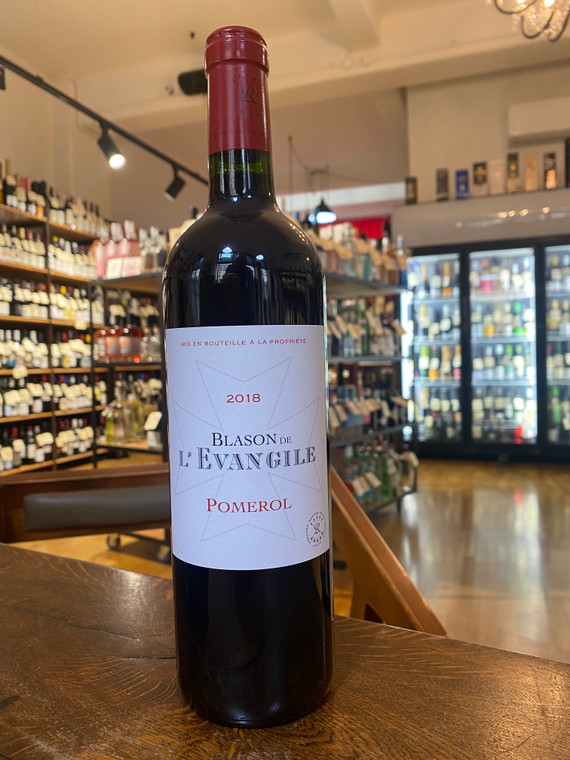
Blason de L’Evangile is selected from the same vats that are used to make the Grand Vin. It has characteristics similar to the Grand Vin, but less potential for ageing as it is matured in barrels for a shorter period of time. It should be drunk younger than its more robust counterpart.
Deep, dense colour with glints of violet.
Refined, fresh nose with subtle, elegant aromas of mocha. Generous on the palate with fruity notes of raspberry and Morello cherry. Ripe, delicate, well-coated tannins contribute to the wine’s power and length. The finish is subtle and smooth.
The Producer
The Léglise family from Libourne founded the property that was to become Château L’Évangile. They were actively involved, around the middle of the 18th century, in the creation of Pomerol’s vineyards. L’Évangile appeared in the 1741 land registry under the name of Fazilleau.
At the turn of the 19th century, the estate was already close to its current configuration, stretching over some 13 hectares, when it was sold to a lawyer named Isambert. He renamed the estate “L’Évangile”. In 1862, L’Évangile was purchased by Paul Chaperon, whose descendants, the Ducasse family, remained the property’s owners until 1990. Paul Chaperon continued to build the estate’s reputation and constructed L’Évangile’s residence in the style of the Second Empire. In the second edition of Cocks Féret in 1868, L’Évangile is listed as a “Premier Cru du Haut-Pomerol”.
Upon the death of Paul Chaperon in 1900, his descendants ran the estate until 1957, when Louis Ducasse took over the property, which was by then in decline and had been damaged by the frost in 1956. He managed to replant the vineyard and eventually restored L’Évangile to its former glory. In 1982, his widow, Simone Ducasse, continued the family’s role in running the estate.
In 1990, Domaines Barons de Rothschild (Lafite) acquired L’Évangile from the Ducasse family with a view to ensuring that the property was looked after to the same high standard. DBR (Lafite)’s initial influence included a more refined selection of the Grand Vin, and the creation of Blason de L’Évangile as a second wine. Efforts were also undertaken to improve the vineyard with a restoration and partial renewal plan that was launched in 1998. The complete renovation of the vat room and the cellar, which was finished in 2004, completed the property’s new configuration.
A remarkable decade of vintages from 1995 to 2005 crowned the work with success. Among these, 1995, 1996, 2000 and particularly 2005 stand out as truly exceptional !




